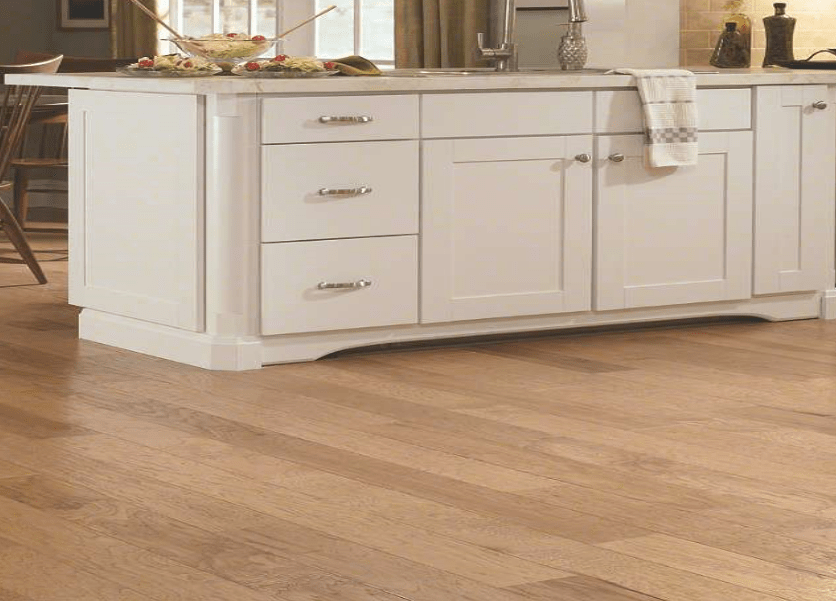Many homeowners worry about what type of flooring they should buy for their kitchen. They figure that the flooring needs to be especially resilient because of the heat and humidity and the amount of traffic a kitchen gets.

The good news is that contemporary flooring for the kitchen is not only tough, but beautiful enough to fit in with any decor. Here are some good and possibly surprising choices for the kitchen floor:
Linoleum
Not to be confused with vinyl, linoleum floors were first made of linseed oil and were very popular during the early years of the 20th century. They fell out of favor but now have returned with a great variety of textures, patterns and colors. Best of all, linoleum is far less expensive than other types of flooring. Now made out of such ingredients as wood floor, resin and even limestone, linoleum is durable, easy to maintain and bacteria-resistant.
Vinyl
Like linoleum, vinyl has been a top choice for kitchen floors for decades. It’s waterproof, good to walk on, won’t crack and competes with linoleum in terms of cost. Homes that were built in the 1950s almost certainly came with vinyl kitchen floors. Now, it comes in many colors and patterns, much like linoleum. Though sheet vinyl needs to be installed by a professional, vinyl tiles can be installed by a diligent do-it-yourselfer.
Tile
Tiles can be glazed or unglazed. Unglazed tile needs to be sealed because it can be stained even by water. Glazed tile is not porous, but if there’s grout between them the grout needs to be treated against staining. If the homeowner is worried that glazed tile is a slip and fall hazard, they can have the tiles textured to allow feet to get a grip on it. Tiles come in many colors, which won’t fade because they’re baked in when the ceramic is fired. Tile can be inexpensive or very pricey, and some types of tile can be installed by a DIYer.
Stone
Stone used for kitchen floors range from marble to granite to slate and limestone and gives a kitchen a look that’s both magisterial and natural. With the exception of slate, stone needs to be sealed. Some homeowners are pleasantly surprised by how affordable some stone is, but it is heavy, and the kitchen floor may need to be reinforced before it’s installed. On the other hand, a stone floor that’s well maintained can last longer than the building.
Cork
Cork is the outer bark of a type of oak tree. It can be taken without killing the tree, which simply grows another layer of bark after a few years. It’s strong, tough, easy to take care of and should be given the same type of finish as a hardwood floor. Cork is soft underfoot and has chambers that trap air and keep it cool in summer and warm in winter.
Hardwood
Though hardwood floors are beautiful, homeowners worry that they’ll warp in the kitchen. However, if the wood is treated and installed in narrow planks it can resist warping. The difference between hardwood and softwood is simply that hardwood comes from deciduous trees such as oak and maple, and softwoods come from conifers such as fir and pine.
Jessica kane is a writer for GoHardwood, a premier flooring company that sells first-rate, quality hardwood flooring products for less.
















Trackbacks/Pingbacks